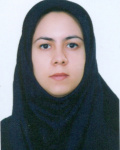| نویسندگان | لیلا بیرانوند,افسانه افضلی |
|---|
| نشریه | Environmental Health Engineering and Management Journal |
|---|
| شماره صفحات | 1 |
|---|
| شماره مجلد | 9 |
|---|
| نوع مقاله | Full Paper |
|---|
| تاریخ انتشار | 2022-10-14 |
|---|
| رتبه نشریه | علمی - پژوهشی |
|---|
| نوع نشریه | الکترونیکی |
|---|
| کشور محل چاپ | ایران |
|---|
| نمایه نشریه | SCOPUS ,ISC ,ISI-Listed |
|---|
چکیده مقاله
Background: Agricultural, industrial, and residential activities have caused the vulnerability of the
groundwater of the Doroud-Boroujerd aquifer to pollution in Lorestan province, Iran. This study aimed
to investigate the vulnerability of the Doroud-Boroujerd aquifer using a set of intrinsic (DRASTIC, IV)
and specific (SI, LU-IV) vulnerability assessment methods.
Methods: The DRASTIC model with seven parameters of groundwater depth, net recharge, aquifer
media, soil media, slope, the effect of the vadose zone, and hydraulic conductivity of the aquifer has
the highest number of parameters. The total dissolved solids (TDS) index was used to compare the
efficiency of different methods.
Results: The results showed two classes of medium and high vulnerability with an area of 73.71%
and 26.3%, respectively, in the DRASTIC model. The SI model had two classes of low and medium
vulnerability. The IV model had three classes of low to high vulnerability, of which the high class with
an area of 75.94%, had the largest extent. The LU-IV model also included four classes of very low to very
high (92.02%) vulnerability. The validation of DRASTIC, SI, IV, and LU-IV models with TDS index
showed a weak correlation between vulnerability maps and TDS values, so it can be concluded that this
index alone is not a good indicator for validation.
Conclusion: The results of vulnerability assessment of different methods generally showed that the
groundwater of this area is highly vulnerable, so it is recommended to take the necessary measures to
prevent, control, and manage these valuable water resources.
